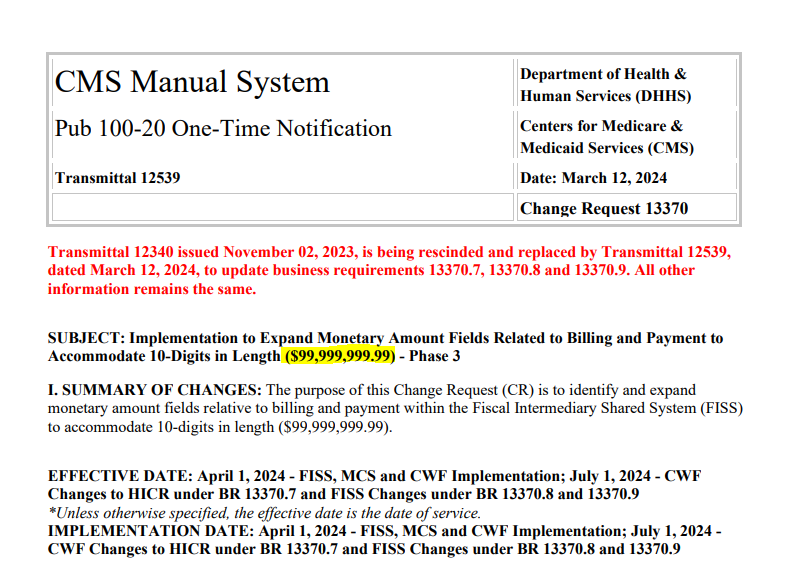Five months ago, I posted a blog about the Centers for Medicare and Medicaid Services (CMS) posting special instructions on how to submit a claim for CTP/skin subs that was $100,000 or more. I was horrified. By way of background, you need to know that one of the general rules pertaining to an 837P (Part B electronic claim) transaction is that the maximum number of characters that can be submitted for a dollar amount field is seven. Therefore, claims containing a dollar amount in excess of $99,999.99 would be rejected. So, CMS provided instructions for a claim of $99,999.99 or more, using a skin sub patient as an example. One reason I was horrified was because the educational example CMS provided was for a CTP/skin substitute that was over $1,000 per square cm. The problem in billing for this service was not just that the wound was large, but that the product was crazy expensive. Little did I know, that was the good old days.
A few days ago I blogged about the fact there is now a product that costs more than $2,800 per cm2. Thus, it was inevitable that CMS would have to provide guidance on how to submit a claim for A MILLION DOLLARS. Yes, there is a new transmittal to replace the previous one, explaining how to submit a ten digit claim, “Payment to Accommodate 10-Digits in length ($99,999,999.99).”
There is something that I really need to know. I need to know how a CTP/skin sub that is >$2,800/cm2 is measurably superior to one that is, say, $200/cm2. I don’t want to know how much money a healed wound could theoretically save over an amputation or a shorter period of care. Since CTPs/skin subs are breeding like Hemingway’s 6-toed cats, I need to know how to justify putting one on a patient that is 100 times more expensive than another one. How are we going to compare clinical effectiveness BETWEEN products, so that we can make choices based on some characteristic other than the amount of PROFIT to be made in the doctor’s office or the home care setting? I genuinely want to know. Message me an explanation of exactly how I can tell when one product is 100 times better than another product.

Dr. Fife is a world renowned wound care physician dedicated to improving patient outcomes through quality driven care. Please visit my blog at CarolineFifeMD.com and my Youtube channel at https://www.youtube.com/c/carolinefifemd/videos
The opinions, comments, and content expressed or implied in my statements are solely my own and do not necessarily reflect the position or views of Intellicure or any of the boards on which I serve.



